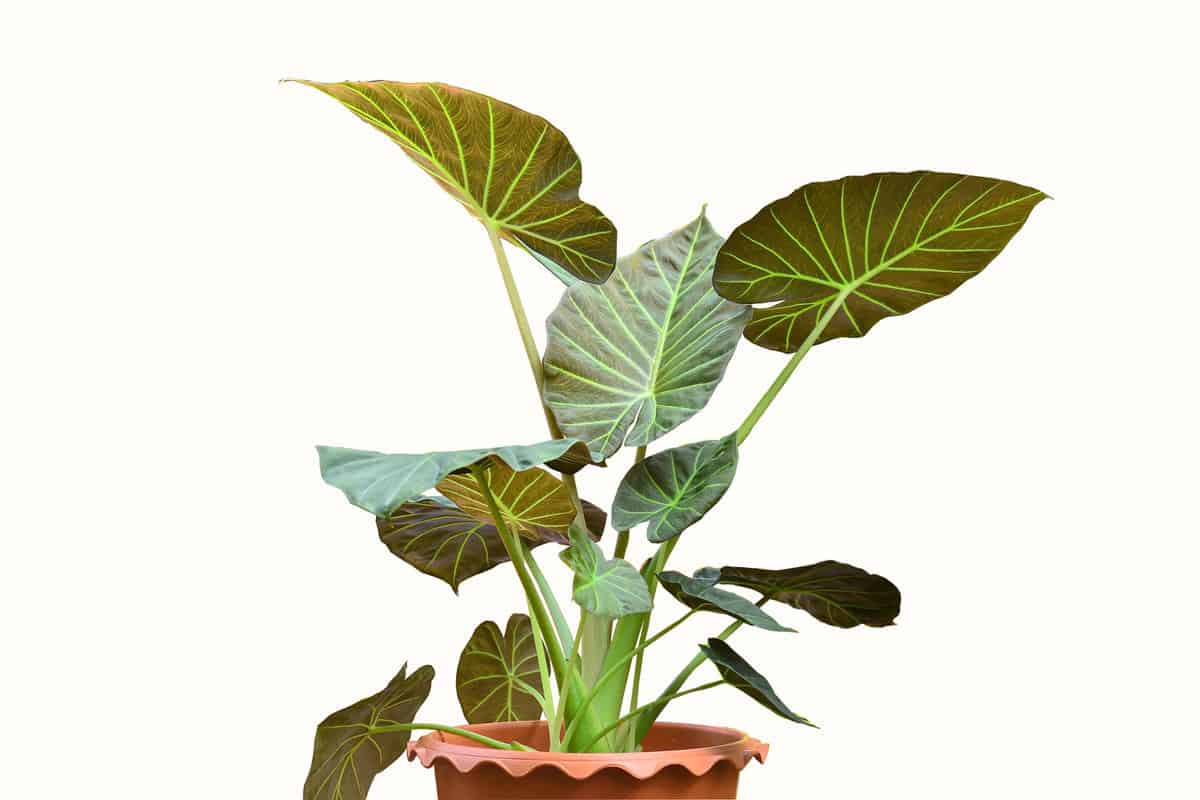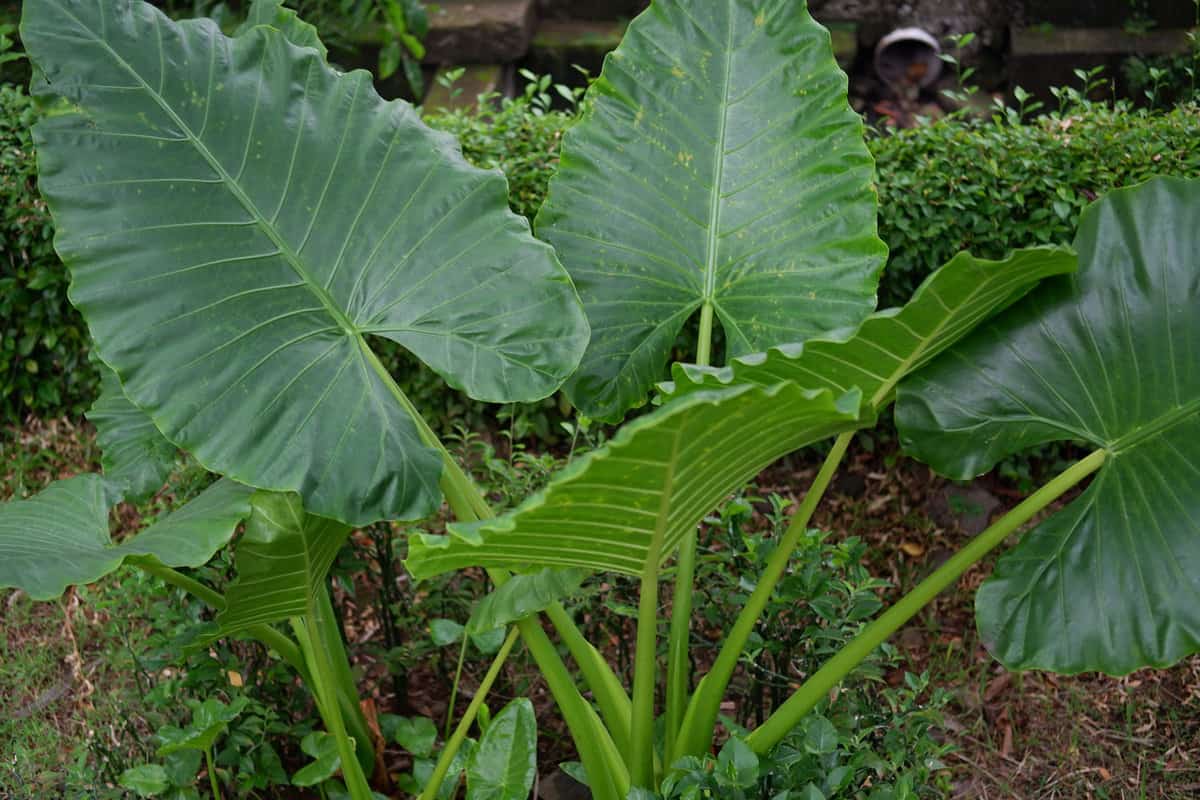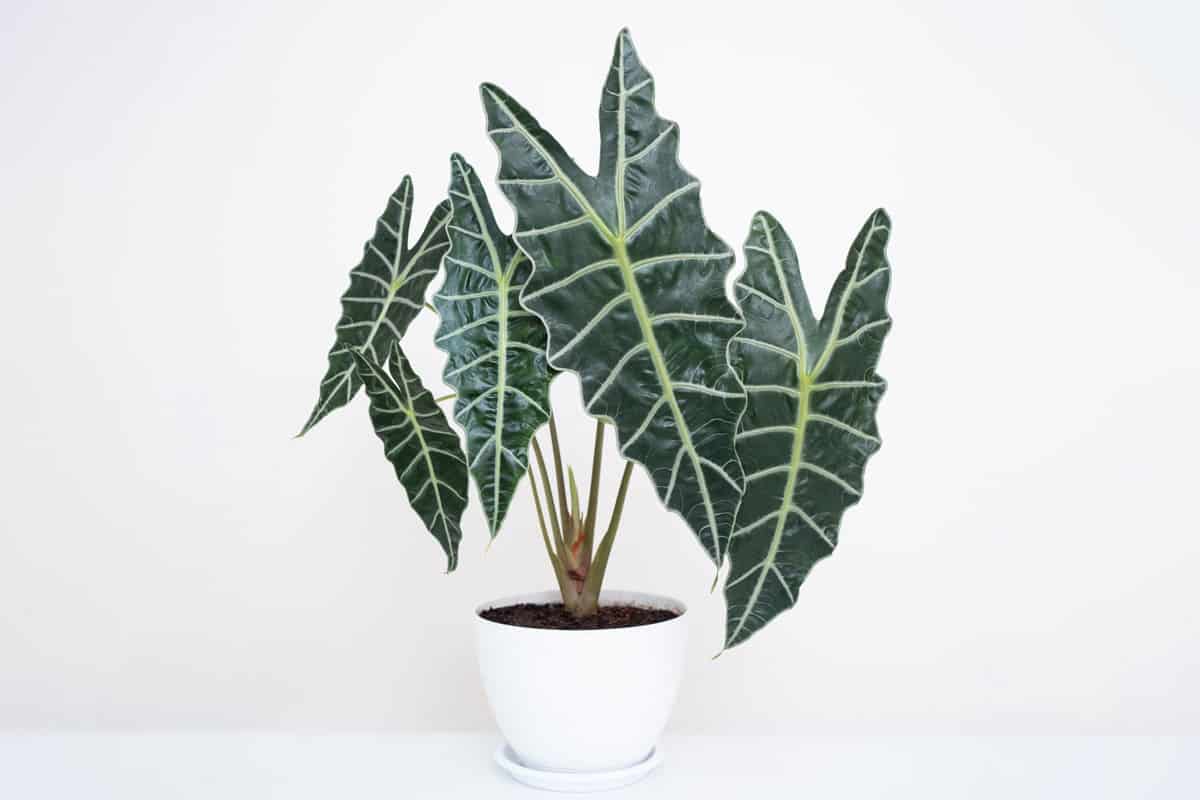Identifying a plant's root system in your landscape isn't always easy. Do you have Alocasias growing in your garden and want to try propagating or replanting but have no idea if they have corms? What is a corm to your plant? Are they a part of the root system?
Luckily, we've done plenty of research and have the answers to these questions below!
Alocasias generally have corms or bulb-like structures in their root system. The corm of your plant is essentially a short, vertical, swollen underground stem that serves as food storage.
Some corms are able to produce baby plants and can be separated to form a new Alocasia through propagation, which can be great for people wanting to expand their gardens.
To find the corm of Alocasia, you want to dig around your plant's base, which should expose the corm or "bulb."
As we start this post, we will cover Alocasia and discuss whether this species has corms. If you're new to growing Alocasias, have a few in your landscape, or need additional help, you've made it to the right place. With that said, let's dive right into this topic and answer your questions!
![The big leaves of Alocasia odora also called night-scented lily, Asian taro or giant upright elephant ear, Do All Alocasias Have Corms [And How To Find Them]](https://gardentabs.com/wp-content/uploads/2022/12/The-big-leaves-of-Alocasia-odora-also-called-night-scented-lily-Asian-taro-or-giant-upright-elephant-ear-Do-All-Alocasias.png)
Do All Alocasias Have Corms?
Yes, you can expect most, if not all, Alocasias to feature corms in their root system. As we said, the corm of a plant is essentially a bulbous food storage stem that can also produce a new parent plant through propagation.
According to experts, you will typically find the corm of an Alocasia attached to the roots of the plant, but it's also possible for them to be rolling around beneath the ground's surface.

That's because corms don't actively grow if they're attached to an existing host/parent plant but instead store food and energy for later on. Corms can also come in handy for Alocasia in the winter, when nutrients and weather conditions may be less than ideal.
It's also common for corms to be called "bulbs," so if you see that term, it's referring to the food storage stem your Alocasia should have.
Another way to think of corms is that they're tiny underground plant stems that grow within the roots of your Alocasia. So, if you ever need to replant your Alocasia, expect to see tiny corms/bulbs nearby in the soil or within its central root system.
What If My Alocasia Doesn't Have Corms?
Suppose you have a younger Alocasia and can't seem to locate the corms. One reason is that they're too small to use for propagation.
An interesting fact about corms is that they develop as your parent plant does. For example, a young Alocasia isn't going to have noticeable corms in its root system because it isn't mature enough.
Some plant pros also claim that the corms of younger Alocasia may not look like corms. They won't be as bulbous, which can be confusing to the eye.
Therefore, if you can't find any corms in the soil surrounding your Alocasia, try and wait a few months or until your plant is more developed.
In addition, older plants will have a more "tuber" looking set of corms attached to their roots or nearby, so the appearance of these storage stems can change throughout their lifetime.
So, if you want to propagate or replant your Alocasia, try and take as much soil with you: there might be tiny corms in there!
How Do You Get Corms From Alocasia?

Now that you know what a corm looks like and where to find it, you may need to gather them. Since Alocasias can only be propagated by division, you'll need to locate the corms and remove them from your parent Alocasias roots.
According to Botanical Brunette, to create a new Alocasia from your existing one, you must first grow an entirely new, self-sustaining one.
To do that, you need to dig around the base of your parent Alocasia. Next, try and locate the tiny, bulbous corms and carefully remove them from the roots or nearby soil.
Since corms hold nutrients and food for your Alocasia, we don't recommend removing every single one you find. Doing this can leave your existing Alocasia to fend for itself, which isn't too nice.
As we mentioned, the only way you can gather corms from Alocasia is to dig them up from the roots. However, you want to be incredibly delicate when doing this to ensure you don't seriously harm your parent Alocasia. The gentler, the better!
Will Alocasia Corms Grow On Their Own?
Yes, you should notice your corms grow on their own once you remove them from Alocasia. That said, you'll need to ensure the corms are in a highly moist environment with plenty of humidity.
According to experts, Alocasia corms can only be successful on their own in super-high humidity. A great way to do this would be to place your corms in a terrarium or a jar.
Of course, you need to choose a planter for them that is big enough to sustain a plant. Growing Alocasia from corms can be meticulous and take constant watching on your end.
Some gardeners also notice that not every corm from Alocasia will sprout. Like seeds, not every corm you try and propagate will be successful.
For example, if you find three or four corms in the soil and want to try growing them into full-sized Alocasias, there's a possibility only one or two will make it.
Another thing to look out for is corms with tiny roots of their own. Usually, these will be more successful after you plant them on their own.
NCYP 5.9 Inch Irregular Geometric Glass Terrarium
This terrarium has an irregular geometric design, features glass panels, works well for growing smaller plants, measures 4.13 x 5.91 x 3.54 inches, and comes in a few size options.
Follow this link to view it on Amazon.
Can Alocasia Corms Grow In Water?

Yes! One of the easier ways to propagate Alocasia is by putting their corms in water. According to pros, doing this can be an aesthetically pleasing way to grow Alocasia corms while avoiding a mess with soil and everyday maintenance.
Leaf Envy claims that Alocasia Polly can easily be propagated in water, as it is a semi-aquatic variety. You can typically do this for most Alocasia varieties, as long as their corms are healthy and you give them enough oxygen.
As we said before, Alocasia corms tend to thrive in moist environments. Therefore, growing them in water is the perfect way to accomplish that without daily mistings and hyper-focused watering.
On top of that, we also recommend ensuring your in-water corm has plenty of bright indirect light. Since it is in water, your Alocasia corm needs plenty of light to keep it viable and growing.
The quality of your plant's water also impacts its growth, so the cleaner, the better. So, although there are various ways to handle corms, you want to be careful how you start them off.
Can Alocasia Roots Grow In Water?
Although this seems like a wild idea, you can place Alocasia in water and see their roots grow. Similar to growing corms in water, Alocasia roots also enjoy moisture.
Houseplant Central claims you can grow your Alocasia in water "indefinitely" with proper care. Specifically, you want to focus on cleaning your plant's water and ensuring its remaining roots and soil are also in good shape.
Putting sick or dying Alocasias into the water won't be helpful and could make your plant even sicker. On top of that, you also want to find a container that your Alocasia will fit in for the next few months, so you don't have to re-pot it.
Ideally, you will only change the planter of Alocasia every year or two, as this can be a lot for your plant to recover from. Again, this will be different for every gardener, so try and keep your Alocasia somewhere it can receive bright, indirect sunlight and give it some space to grow.
Are Alocasia Indoor Or Outdoor Plants?

Although you may see Alocasia outdoors as feature plants in container gardens, they also double as popular houseplants. One of the main reasons Alocasia are so popular inside is their striking foliage and low-maintenance care schedule.
However, this species is moisture and shade-loving, so if your garden fits that description, you could see it thrive outdoors rather than in your home. Of course, this depends on the conditions and year-round weather your garden will experience.
In addition, Alocasia doesn't do well in harsh winter weather, so if you have one outside, bring it indoors once the temperatures fall.
Like most house-friendly species, you don't want to let Alocasia sit through a freeze or snowstorm. In contrast, if the climate outside is warm and bright, you can also let your normally-indoor plant go outside in the garden until next winter.
Luckily, this herbaceous perennial is pretty easy to deal with, so you shouldn't run into problems as long as it doesn't get too cold.
To Wrap Things Up
Whether you have an Alocasia growing in your garden or home, it's always good to know how its root system works. From what we found, all Alocasia should have corms, although they can be challenging to locate when the parent plant is small.
Furthermore, to propagate Alocasia, you'll need to remove the corms from its roots. To do this, dig around the base of your plant, find the bulbs/corms, and transfer them to a bright, wet ecosystem.
You can use a terrarium for this or even a jar: make sure they're big enough.
Made it to the end? Check out these other helpful garden articles below!
What Size Pot For Elephant Ear Bulbs [And How Many Bulbs Per Pot]

